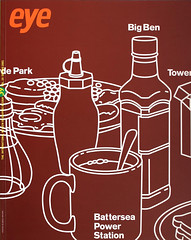Spring 2001
Self 1: Self-expanding
When a practice goes live with its own website, the lines between sales pitch, culture, publishing and ads get blurred. But ask a search engine for designers and you end up with branding or blandness. Maybe self-indulgence is the best policy
Why put a self-promotional site on the Web? For some graphic designers it is a purely commercial strategy; to show what you have done in order to get more clients. For others it is more of a platform to show what they are capable by creating self-initiated projects. Instead of the portfolio becoming the website, the website becomes part of the portfolio: the self-initiated project presents itself as the possibility of what can be done, how the designer thinks and makes. A ‘traditional’ site is compelling either because it has interesting work or an interesting structure that holds the work. Yet it’s the sites that dissolve the boundaries between self-promotion and self-expression hold the most interest — perhaps because there is more room for conceptual thinking. The limitations are clear: only a few formal approaches, structures and concepts are possible, and the too-homogeneous appearance created by technology. And too many companies place their work online without considering the negative effects of the shift in context. The sites that break away from this, and question the pervasive norms of design and structure are quirky, bizarre, difficult and self-indulgent. In fact, just the kinds of sites I would normally dismiss for those very reasons!
Michael Worthington, designer, educator, Los Angeles
First published in Eye no. 39 vol. 10, 2001
Eye is the world’s most beautiful and collectable graphic design journal, published quarterly for professional designers, students and anyone interested in critical, informed writing about graphic design and visual culture. It is available from all good design bookshops and online at the Eye shop, where you can buy subscriptions and single issues.

